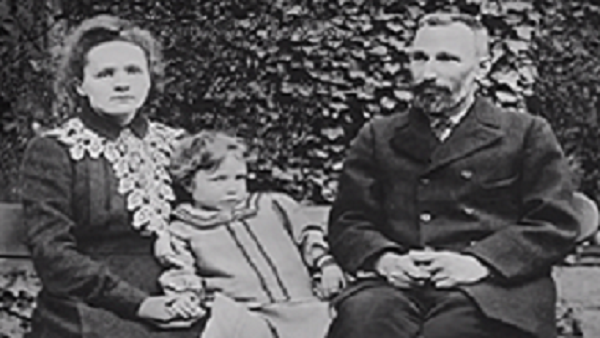Madame Marie Curie is one of the greatest and most passionate scientists humanity has ever seen. She is one of the two laureates who won the Nobel Prize twice.
Radium, invented by the world-famous lady scientist Madame Marie
Curie, proved very useful in the treatment of cancer. She could sell her
invention to any company for millions of pounds, but she didn’t. She didn’t
receive a pie for her invention. She said, “It will be contrary to the
essence and purpose of science”. She left greed and thane-ship and chose to
serve humanity. God blessed her with so much popularity due to her
disinterested service that she was awarded a Nobel Prize for her prominent and outstanding work in Physics in 1903 and in Chemistry in 1911.
The dawn of her life
Madame
Marie Curie was born on 7 November 1867 in Warsaw, Poland. At the age of nineteen, she started working in the house of a
wealthy family. Besides chores, she had to look after a ten-year-old girl. The
owner’s son of the house where she was working began to like her and proposed
to Madame Marie Curie. When his parents knew about this, they
called all the servants together, and in front of them, they blamed and insulted
Madame Curie because she wanted to become the owner of the house. That day, she
realized her insult and knew that poverty was a big crime. The only truth is
what the rich say. Not Marie Curie, but the wealthy son of the owner was
interested in her. After being dismissed from the service, she left not only her
city but also the country and became a citizen of France to get a higher
education.
A life full of
struggle
The
shy and destitute Marie Curie got admission to the University of Paris in 1881 and devoted her life to science. She was so shy that she couldn’t make any friends. Her
condition was so poor that she had to spend three shillings a day, and this
included room rent, food expenditure, and university fees. The conditions of
her room were also so poor that it had no heating system. In winter, she could
only buy two sacks of coal. Therefore, she had to use the coal very carefully, and that’s why often she was to study without fire in the furnace in extreme
cold. When she felt extremely cold while sleeping, she had to take out
all her clothes from the box, using half of them as a blanket and spreading the other half on
the bed to avoid the extreme cold of the winter. If all this failed to stop the
cold, she put her chair on herself to decrease the intensity of the
cold. Due to economic constraints, she had to eat only bread and butter for
several days, and several times, she fainted because of weakness.
One
day, she fainted in the classroom due to hunger, and her teacher knew about her
poverty. Though he was poor himself, he helped her, and in 1895, Madame Curie
married him. Her husband, Professor Pierre Curie, was also a scientist. Because
of her husband’s name, she tagged her name with Curie. Together, they caused a
stir in the world of science.
The great invention
of Madame Marie Curie
In
July 1898, they both announced the discovery of an element that was four
hundred percent more radioactive than Uranium. She named it “Polonium” because of the name of her country, Poland. The
same year in December, the Curie family discovered another element called
Radium. It is a Latin word that means “radiar,” which means to shower
rays. Marie and Pierre’s inventions in Science will keep their names alive forever. He was very keen to
take part in the work of his wife but one day while he was crossing a road in
Paris, a taxi hit him to death.
The greatness of
Madame Marie Curie
At
the time of marriage, their total asset were two bicycles. Marie earned her
Ph.D. despite her extreme poverty. She chose a very interesting topic for
her Ph.D. She decided to tell the world why rays are emitted from Uranium. It
was an impossible task, but due to her hard work, she discovered an element
during her experiments that was two million times more radioactive, and its rays could pass through everything, like stone, metal,
iron, etc. She named it Radium, and it was a big blast in the world of science. People asked for proof about Radium. They bought
a wrecked place with a roof. There, they melted eight-ton iron for four years, out of which they got radium equal to a grain of pea. They bore all the
asperities of winters and summers on their bodies. The poisonous smoke made
holes in her lungs, but she didn’t give up.
Radium
brought the message of life to millions of patients with cancer. It is known today as the therapy of rays. This is in fact the
invention of Marie. This was Marie who melted iron for four years to assure the
life of cancer patients. She was the only woman in the world who was
awarded Noble Price twice in her life. Thirty films have been produced about
her life while hundreds of books have been written about her.
Thus,
she was a great woman. She devoted her life to serving humanity. Such people
can never be forgotten. The world remembers them forever.



.png)
.png)
.png)
.png)